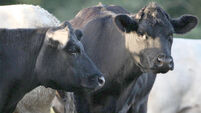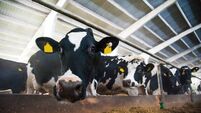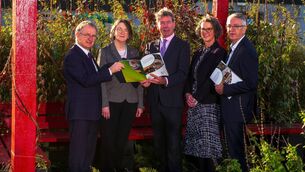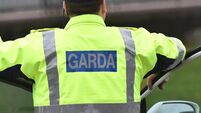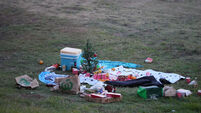Co-op marks centenary with plan to invest €20m in milk processing
Speaking at the launch yesterday in Nenagh, Co Tipperary, of The Story of Arrabawn Co-op by journalist Martin Ryan, Arrabawn chairman Patrick Meskell said the co-op will build significantly on its current €185m annual turnover.
Mr Meskell said the co-op had come a long way from the seeds planted 100 years ago by the founders, who had the vision of generating the maximum return for their labours by controlling operations outside the farm gate and who began by setting up local creameries. “This history acknowledges their work, records their achievements and expresses our gratitude for all they succeeded in doing,” said the Arrabawn chairman. “Today we have a turnover of €185m, with €120m from the dairy division, and €65m from the trading division. We have shareholder funds of €35m. We have 950 milk suppliers who supply us with 248 million litres of milk, and we have 300 staff.
“We plan to grow even more, particularly given the opportunities presented by the abolition of milk quotas. We are investing €20m and expanding processing capacity by up to 50%. So we have already set out our stall for the next 100 years.”
The Story of Arrabawn Co-op was commissioned to celebrate the centenary of its foundation as Nenagh Creamery in 1913. It was launched by Minister of State for Agriculture Tom Hayes. The book also celebrates the 50th anniversary of the founding of Mid-West Creameries in 1963 in Co Galway. The Nenagh and Mid-West co-ops amalgamated in 2001, and Arrabawn now serves farmers and consumers in counties Tipperary and Galway, plus parts of Limerick, Clare, Offaly and Westmeath.
The book tells of the people who developed the co-op, starting from a time when farmers had a fight to gain ownership of their land.
“I started the book back in the early 19th century to give a sense of the struggles that preceded the formation of the co-op movement, with the Land League and the Famine,” said Martin Ryan. “In 1908, only 20% of farmers owned the land they were working on, and many farmers were very cruelly treated by landlords.
“The book tells of one bailiff who was very badly beaten when he came to evict a family from their farm close to Nenagh. Often the bailiffs were killed and farmers burned their houses rather than let them be taken away from them. When people in other EU countries ask why Irish farmers have such a deep affinity to ownership of land, you have to remember those scenes of battling for the land were just 100 years ago.”
Teagasc director Prof Gerry Boyle told those present that dairy would remain the most sustainable sector of Irish farming. He said the income of the top tier of farmers in Arrabawn’s hinterland were on a par with the top tier nationally, while those in the co-op’s lower tier had earnings significantly higher than their section nationally.
Other speakers included Prof Michael Boland, University of Minnesota; Arrabawn chief executive Conor Ryan; and transport minister of State Alan Kelly.
Some 300 guests attended the launch, including board members, milk suppliers, staff, customers, the Department of Agriculture, Teagasc, ICOS, the Irish Dairy Board, the National Dairy Council, IFA and ICMSA.
Running to 400 pages, the history has a large selection of photos. It is available in local bookshops, at €20, or from Arrabawn Co-op in Nenagh. Tel: 067-41800.


